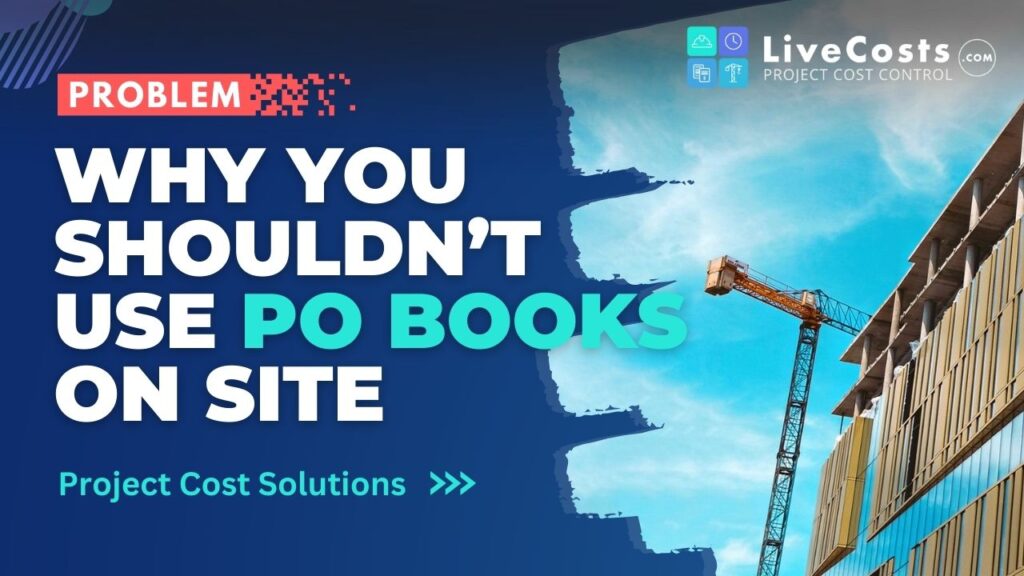PROJECT COST SOLUTIONS
TRANSCRIPTION
So, PO books on site are a bad idea. Why? Because we don’t have a connection point between where the costs are being committed to on the project linked up to any thinking around where the costs are being tracked.
If that’s the case, we’re going to be reliant on gathering that information out of the book or out of someone’s head, or even sometimes it can be caught up in a silo which is the PO that’s being generated off a spreadsheet.
It’s a bad idea because we don’t have sight over what’s happening at the purchasing point, at the commitment point, which is dangerous. And a lot of the time, which results in tracking costs off the invoice, which again creates danger.
We’re holding postmortems on these projects. We’re only looking at costs when the invoice has actually come in and not taking control over the committed costs as they leave the company.
What we need to do is digitise that. The smart technology available everywhere we look these days. We don’t need to be working off paper-based purchase order systems. We don’t need to be raising purchase orders out of spreadsheets.
What we can do is connect everyone in the company to the project and set a permission set that makes sense to that particular role.
What we’ll do is we’ll structure the project. We’ll then have a way of tracking the two different cost types, i.e. green costs being approved costs that have an invoice and amber costs being committed costs like purchase orders that have been raised from suppliers.
And then we want to be at the track, who’s doing what, what they are spending on, what’s their status; which we can do then in a purchasing system by looking through all the purchase orders, searchable by project, searchable by phase, searchable by supplier, date range and by status.
That also allows us to set up the goods received notices. So, we can now confirm from site what we’re actually receiving against these purchase orders.
The result of that is it’s gonna significantly reduce the amount of time we spend processing invoices.
So, by using a smart scanning technology, we can basically scan these invoices in, link up the cost to the PO, reconcile the goods received notices, update the cost on the project’s dashboard, and just have a simple way of us keeping control over what’s being spent, when it’s been spent, who it’s being spent by.
Take A Tour of LiveCosts
See why thousands of construction projects around the world choose LiveCosts to track construction labour.



